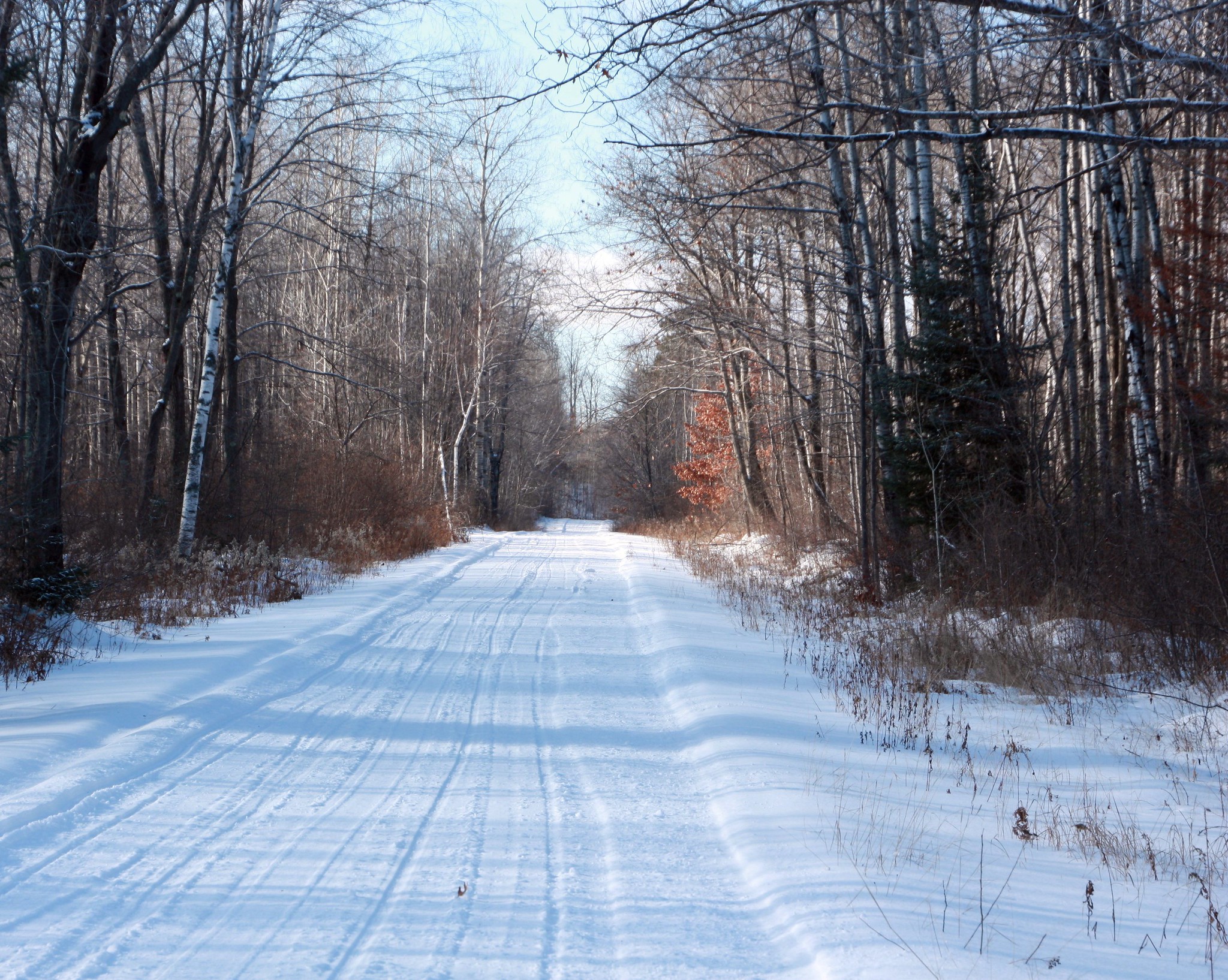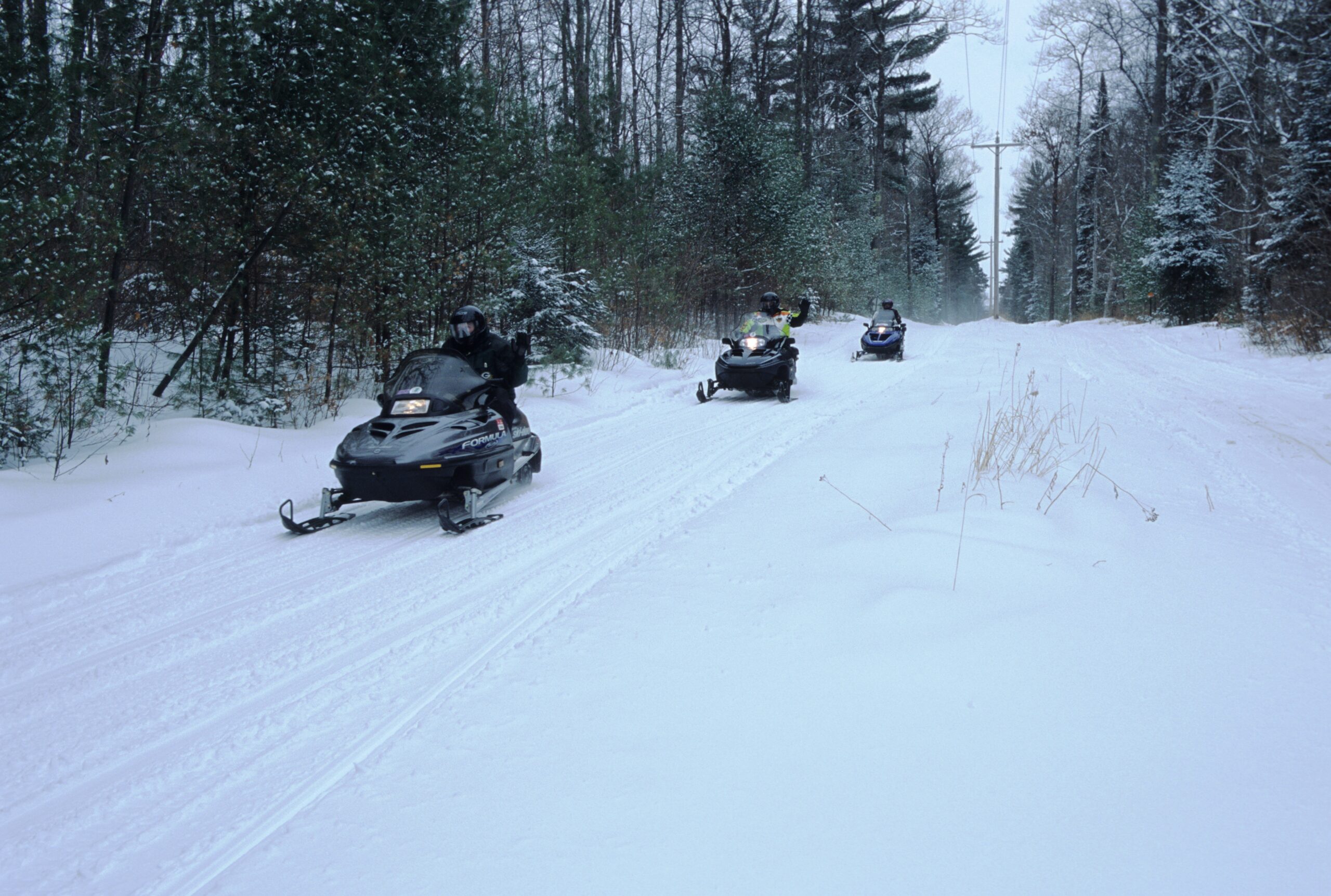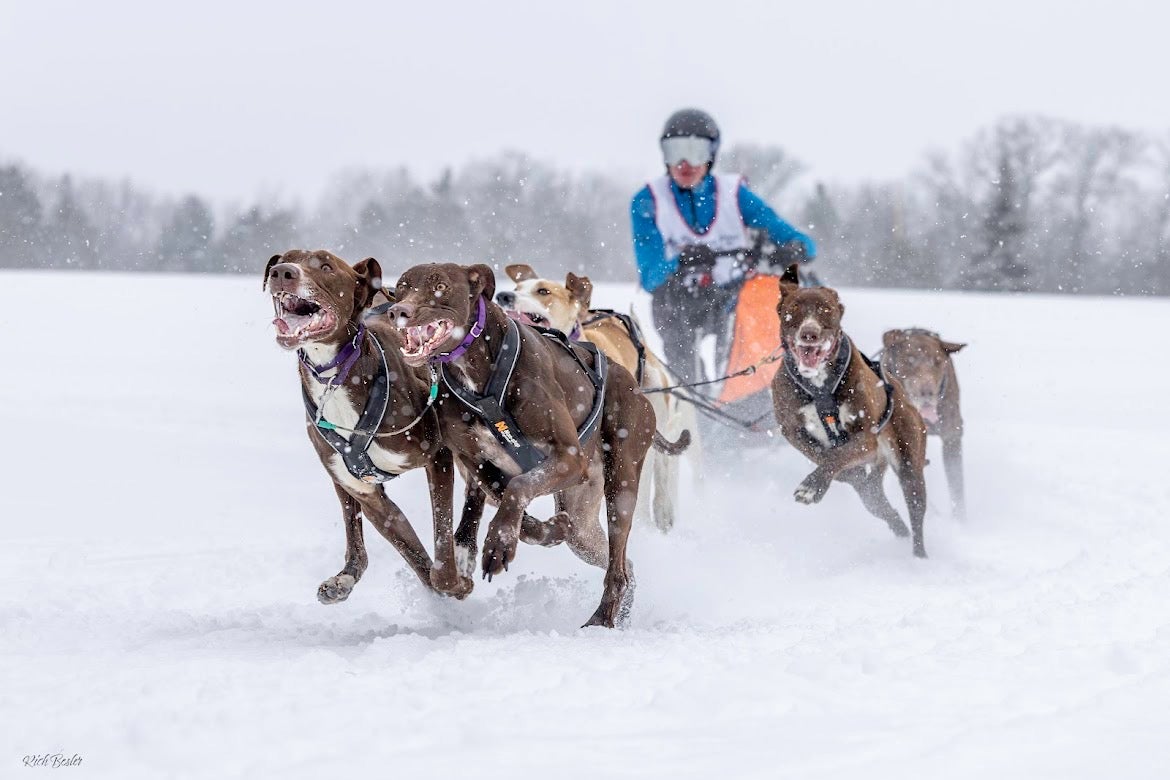As snowmobilers glide across northcentral Wisconsin’s scenic trails each season, they experience a carefully crafted winter wonderland made possible by a dedicated group of volunteers.
Long before the first ride of the season, teams of snowmobile enthusiasts work behind the scenes to clear fallen trees, secure land-use agreements and groom the trails to ensure a smooth and safe ride.
Their efforts not only make snowmobiling possible but also preserve a cherished tradition that brings together riders from across the state and beyond.
Stay informed on the latest news
Sign up for WPR’s email newsletter.
Jim Wendt, president of the Oneida County Snowmobile Council, has spent decades leading these efforts. He spoke with WPR’s “Morning Edition” host Shereen Siewert about the allure of snowmobiling and the labor of love that results in public access to thousands of miles of trails each season.
“At night, when the stars are out, and the moon is out, it’s so beautiful in the woods,” Wendt said. “The snow is glistening, and it’s just a magical land of solitude. It really is. It’s just you and your machine. I love being out there, making trails that are flat and smooth and just wonderful for the snowmobiling public.”

Snowmobiling in Wisconsin depends largely on cooperation between private landowners and clubs, with agreements renewed each year to allow public access. Volunteers also monitor trail conditions, ensuring that ice crossings on lakes and rivers are safe and that the snowpack is suitable for riding.
For Wendt and his fellow volunteers, the reward comes in the form of pristine trails and the joy of seeing riders enjoy Wisconsin’s winter landscape. Their dedication ensures that each season, Wisconsin remains one of the premier snowmobiling destinations in the country.
The following interview was edited for brevity and clarity.
Shereen Siewert: Walk us through the process of preparing and maintaining snowmobile trails throughout the season. When do you begin?
Jim Wendt: Generally, we start preparing trails in September or October, when we start clearing the trails. A lot of storms bring downed trees and things like that, so we need to go out and cut that away from the trails.
At that point in time, we are also in the process of verifying landowner agreements with the people who have allowed us so graciously to use their property for our trail system.
Once the snow flies and we have enough of it, we pan the trails. That involves going out in our equipment and packing the snow as we begin to run the trail system. We pack the snow again as we get colder temperatures that allow us to start driving that frost down into the trails. Then we’re waiting for that particular point in time when the trails open so we can begin grooming operations.
SS: How do you work with landowners to ensure trails remain open each year?
JW: Every club looks back at what they did the year before to successfully run trails through private property. We have to make sure that the landowner will still allow us there, so we contact them to make sure everything was okay in the past and that we are in for the season.
Landowners also need to know that they are covered by insurance. That is all taken care of by the clubs and our insurance carriers, so landowners have no liability if there was an accident or if something were to happen on the trails they host. There is no exposure to them, so that helps us a lot in gaining those landowner agreements.
SS: Where does the funding come from to maintain these trails?
JW: In the state of Wisconsin, we are funded by gas tax. We get a percentage of the gas tax for every sled that’s registered in the state. That money goes into our general fund, and each club maintains their own accounts.
We raise money through raffles and other events through the graciousness of our local businesses. Membership is another way the trails are funded. When members send in their forms for renewals, every once in a while someone will kick in extra money, so our memberships help out as well. This all goes into one single account.
When we begin snowmobiling in earnest, we report the hours we spend on the trails to the Wisconsin Department of Natural Resources, which allows us to get the money from the state from the gas tax. That’s how we generate our whole pot of operating funds for each club.
SS: How do you monitor the safety conditions in areas of the trail that can be challenging, like those by rivers and lakes, for example?
JW: When each club goes to open the trails, we have 48 hours from the public service announcement that comes from our county coordinator to get ready, open all the gates, check all the trails and make sure they’re safe.
We look at water conditions, for example, and if we have to, we’ll mark them off and close off those portions of the trail and reroute them. After 40-plus years in the business of snowmobiling, I personally like to see about 6 or 8 inches of wet snow before we begin.
This season we haven’t had a real wet snow yet; it’s been unbelievably dry. When you get that fluffy snow, 6 inches packs to only about a half inch of snow on the trails. The frustration that people have when we have snow and are not yet open, it’s usually because it’s not the right snow for us to make a good, solid snow base.
We’re really just getting started with the season now, but I’m hoping we can do some good in February and March since our trails close March 31 in the state of Wisconsin.
If you have an idea about something in central Wisconsin you think we should talk about on “Morning Edition,” send it to us at central@wpr.org.





